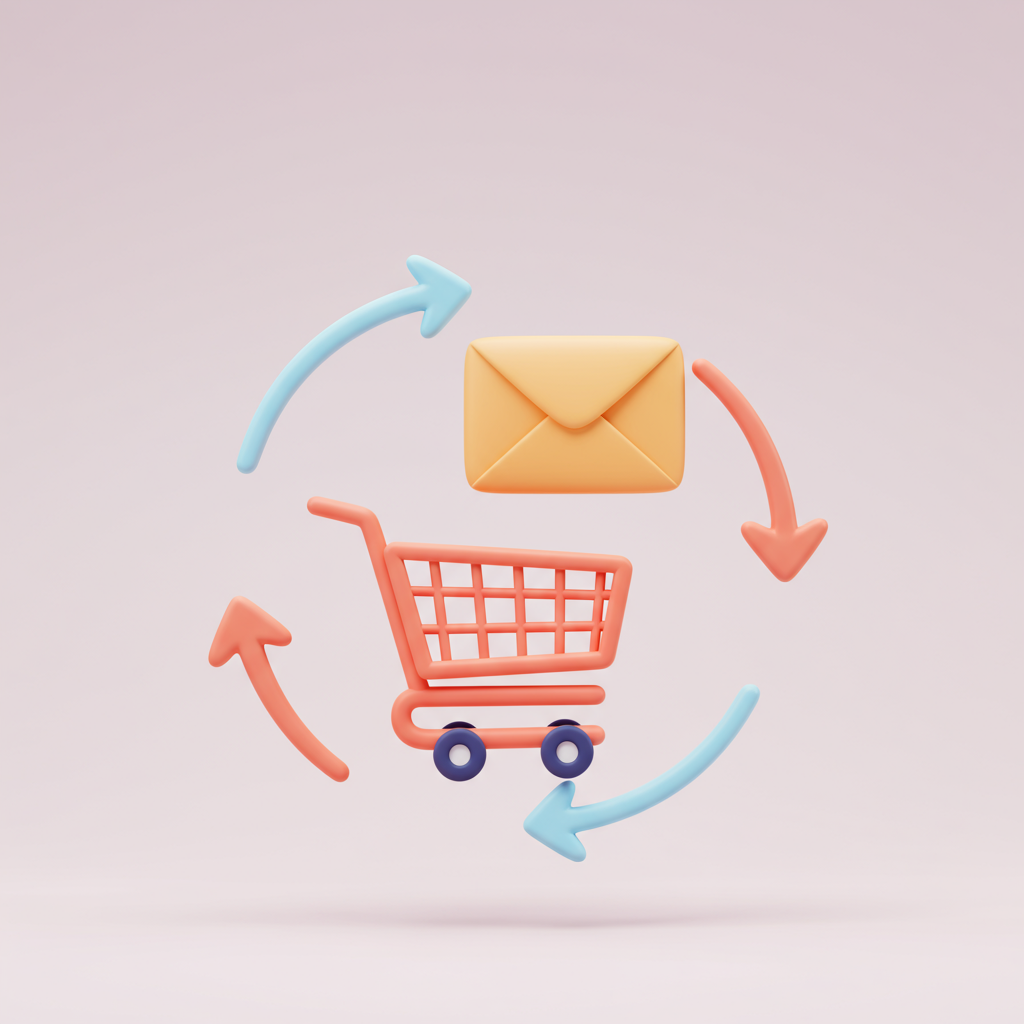Unlock lost revenue and boost your Shopify store’s sales with a powerful, automated abandoned cart email strategy.
As a Shopify merchant, I know the feeling all too well: a customer adds items to their cart, browses, perhaps even starts the checkout process, and then… they disappear. It’s like watching money walk out the door, and it can be incredibly frustrating.
This common scenario is known as ‘cart abandonment,’ and it’s a significant challenge for every online business. Industry statistics consistently show that a vast majority of online shopping carts are abandoned before purchase completion.
Think about it: someone was interested enough to add your products to their cart. They showed intent. This isn’t just a casual browser; this is a potential customer who was just a few clicks away from converting.
The reasons for abandonment are varied: unexpected shipping costs, a complicated checkout process, just browsing, getting distracted, or even simply wanting to compare prices. Whatever the reason, the result is the same: lost sales.
But here’s the good news, and something I’ve learned firsthand: a significant portion of these abandoned carts can be recovered. This is where the magic of abandoned cart email automation comes into play.
I’ve implemented and refined abandoned cart email sequences for my own Shopify stores, and I can tell you, it’s not just a ‘nice to have’ feature; it’s an absolute necessity for maximizing your revenue.
At its core, abandoned cart email automation is about sending timely, personalized reminders to customers who left items in their cart without completing the purchase. It’s a gentle nudge, a helpful reminder, and sometimes, the perfect incentive.
Shopify, thankfully, offers some built-in functionality for abandoned cart recovery. You can set up a single automated email to be sent after a certain period. This is a good starting point, but in my experience, it’s often not enough to truly optimize your recovery rates.
While Shopify’s native feature is convenient, it lacks the advanced segmentation, multi-email sequences, and detailed analytics that more robust email marketing platforms offer. For serious recovery efforts, I highly recommend integrating a dedicated email marketing app.
Platforms like Klaviyo, Omnisend, Mailchimp, or ActiveCampaign integrate seamlessly with Shopify and provide far more control over your abandoned cart strategy. They allow for multi-step flows, A/B testing, and deep personalization, which are crucial for success.
So, what does an effective abandoned cart email strategy look like? It’s more than just one email. I’ve found that a series of 2-3 emails works best, each with a distinct purpose and timing.
The first email should be sent relatively quickly, ideally within 30 minutes to an hour after abandonment. This email is a gentle reminder, catching the customer while their interest is still high.
For this initial email, I keep it simple and helpful. The subject line might be something like ‘Did you forget something?’ or ‘Your cart is waiting!’. The body should clearly show the items they left behind, a direct link back to their cart, and perhaps a friendly offer of assistance.
The second email in the sequence typically goes out 24 to 48 hours later. This email can be a bit more persuasive. I often use it to address common objections or build trust.
In the second email, you might highlight customer testimonials, showcase product benefits, or offer free shipping if that’s a viable option for your business. The goal is to remind them of the value they’re missing out on.
The third and final email in the series, sent around 48 to 72 hours after abandonment, is where you might introduce an incentive. This is often a small discount, a free gift, or a limited-time offer.
I use incentives sparingly, as they can train customers to abandon carts just to get a discount. However, for that final push, a well-placed incentive can be incredibly effective in converting hesitant buyers.
Regardless of the email in the sequence, personalization is key. Always include the customer’s name and clearly display the products they left in their cart. Seeing the actual items they considered makes the email much more relevant.
A clear, prominent call-to-action (CTA) button is non-negotiable. It should be easy to spot and clearly state what you want them to do, e.g., ‘Complete Your Order’ or ‘Go to Cart’. High-quality product images also help jog their memory.
Crafting compelling subject lines is another critical component. They need to be engaging enough to stand out in a crowded inbox. Experiment with urgency, curiosity, or a direct reminder.
Always ensure your emails are mobile-optimized. A significant portion of online shopping happens on mobile devices, so your emails must look great and function perfectly on smaller screens.
Beyond the basic sequence, consider advanced strategies like segmentation. If you know why someone abandoned (e.g., high shipping cost), you can tailor your email to address that specific concern.
A/B testing is your best friend here. Test different subject lines, email content, timing, and incentives to see what resonates most with your audience. What works for one store might not work for another.
Finally, track your results. Monitor your abandoned cart recovery rate, the revenue generated from these emails, and your return on investment. This data will help you continually refine and improve your strategy.
Implementing a robust abandoned cart email automation strategy has been one of the most impactful changes I’ve made to my Shopify business. It’s a consistent, automated way to recapture lost sales and significantly boost your bottom line.
It requires a bit of setup initially, but once it’s running, it works tirelessly in the background, turning potential losses into profitable conversions. It’s about being helpful and persistent, not pushy.
What are your thoughts on this article? Do you have any specific challenges or successes with abandoned cart emails that you’d like to share?
I truly believe that by embracing this powerful tool, you can transform your Shopify store’s performance and ensure that fewer potential sales slip through your fingers. Start recovering those carts today!






